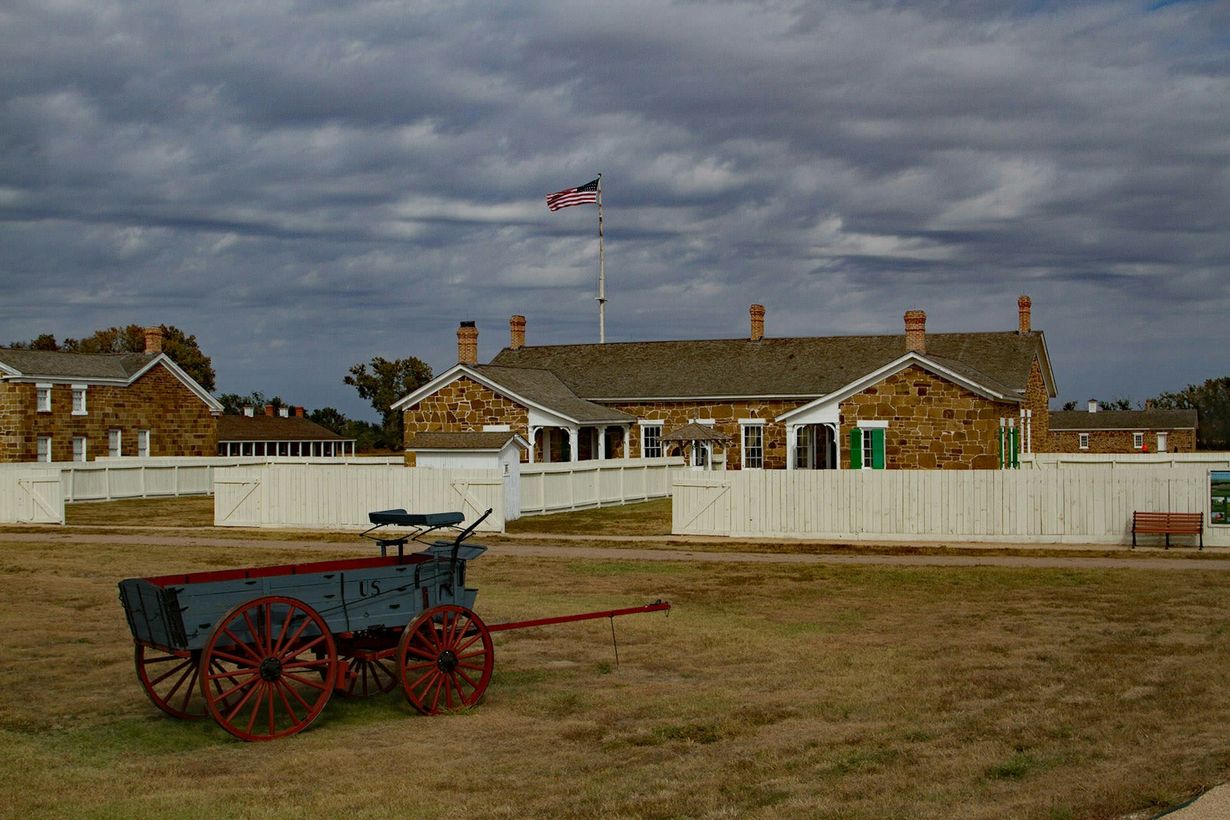The Hidden History Of Kansas’s Fort Larned

Have you ever wondered about the hidden history of Kansas's Fort Larned? This fascinating site offers a glimpse into the past, showcasing life on the American frontier. Built in the 1860s, Fort Larned played a crucial role in protecting travelers on the Santa Fe Trail. Today, visitors can explore well-preserved buildings, learn about the soldiers who served there, and understand the interactions between the military and Native American tribes. Whether you're a history buff or just curious, Fort Larned provides a unique opportunity to step back in time and experience a piece of American history firsthand.
The Beginnings of Fort Larned
Fort Larned, located in Kansas, holds a rich history dating back to the mid-19th century. This historic site played a crucial role in the protection of the Santa Fe Trail and the expansion of the American frontier. Here are some key places that tell the story of Fort Larned.
- The Barracks
The barracks housed soldiers who protected travelers and traders on the Santa Fe Trail. These buildings, constructed from sandstone, still stand today, offering a glimpse into the daily lives of the soldiers stationed here.
- The Commissary Storehouse
This building stored supplies essential for the fort's operation. From food to ammunition, the commissary was a vital part of keeping the fort running smoothly. Visitors can see original artifacts and learn about the logistics of frontier life.
Key Events at Fort Larned
Fort Larned witnessed several significant events that shaped its history. These events highlight the fort's strategic importance and the challenges faced by those who lived and worked there.
- The Indian Peace Council of 1867
In 1867, Fort Larned hosted a peace council between the U.S. government and Plains Indian tribes. This meeting aimed to reduce conflicts and establish peace in the region. The council's outcomes had lasting impacts on the relationships between settlers and Native Americans.
- The Battle of Pawnee Fork
This skirmish in 1867 involved soldiers from Fort Larned and a group of Cheyenne warriors. The battle underscored the tensions between the U.S. military and Native American tribes during this period of westward expansion.
The Architecture of Fort Larned
The fort's architecture reflects the practical needs and military strategies of the time. Each structure was designed with specific purposes in mind, contributing to the fort's overall functionality.
- The Blockhouse
The blockhouse served as a defensive structure, providing a vantage point for soldiers to watch for potential threats. Its thick walls and strategic location made it a key part of the fort's defense system.
- The Hospital
Medical care was crucial for the soldiers stationed at Fort Larned. The hospital treated injuries and illnesses, offering a stark contrast to the harsh realities of frontier life. Today, visitors can learn about 19th-century medical practices and the challenges faced by military doctors.
Fort Larned's Role in the Santa Fe Trail
Fort Larned's location along the Santa Fe Trail made it a critical stop for traders and travelers. The fort provided protection and resources, ensuring the safe passage of goods and people.
- The Santa Fe Trail Ruts
Visible ruts from the Santa Fe Trail can still be seen near Fort Larned. These deep grooves in the earth were carved by countless wagons traveling the trail, serving as a tangible reminder of the fort's role in this historic route.
- The Sutler's Store
The sutler's store was a civilian-operated shop that provided goods to soldiers and travelers. It was a bustling hub of activity, offering everything from food to clothing. Today, the restored store gives visitors a sense of the commerce that took place at the fort.
Fort Larned Today
Today, Fort Larned stands as a testament to the resilience and determination of those who lived and worked there. It offers a unique opportunity to step back in time and experience a piece of American history.
- The Visitor Center
The visitor center provides an overview of Fort Larned's history and significance. Exhibits, films, and interactive displays help bring the fort's story to life, making it an essential stop for anyone exploring the site.
- Living History Programs
Fort Larned hosts living history programs that recreate the daily activities of the fort's inhabitants. These programs offer a hands-on experience, allowing visitors to see, hear, and even taste what life was like at Fort Larned.
Why Fort Larned Matters
Fort Larned stands as a testament to the rich history of Kansas and the American frontier. This site offers a glimpse into the lives of soldiers, Native Americans, and settlers who shaped the region. Visiting Fort Larned, you can explore well-preserved buildings, learn about military strategies, and understand the complex relationships between different cultures. It's not just a historical site; it's a place where stories come alive. Whether you're a history buff or just curious, Fort Larned provides a unique educational experience. Make sure to add this hidden gem to your travel list. You'll leave with a deeper appreciation for the challenges and triumphs of those who lived here. Fort Larned isn't just a part of Kansas history; it's a part of America's story.

